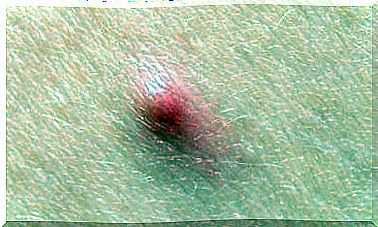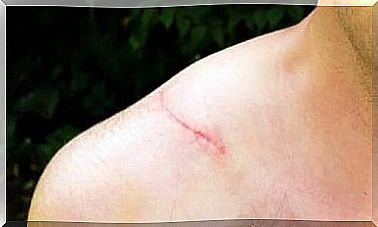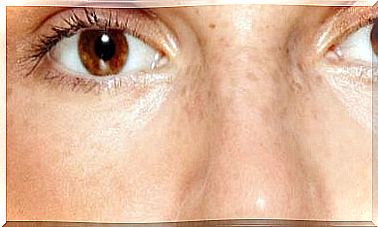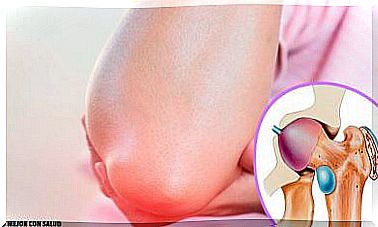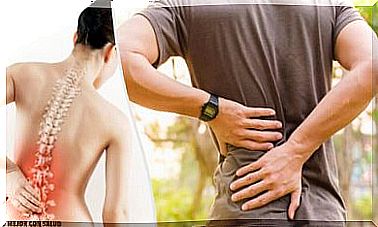Symptoms And Causes Of Thyroid Nodules
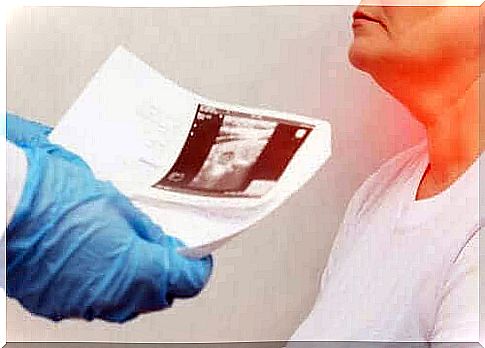
In today’s article, we are going to talk about the symptoms and causes of thyroid nodules. Thyroid nodules are cell growths in the thyroid gland in the form of nodules or swellings. Some of them are detectable by simple palpation, although many of the nodules are small and cannot be palpated in the neck.
Thyroid nodules can be solid or cystic. Cystic nodules are fluid filled and covered with capsules containing them. However, solid nodules are completely solid.
They can be located in different parts of the thyroid gland, which consists of two lobes connected by a thin band of tissue. This gland is located in the neck and under normal circumstances you cannot feel it by palpating your neck.
Since one of the functions of the thyroid gland is to produce T3 and T4 hormones, a nodule in this gland may be functional. This means it can secrete hormones just like normal tissue. In these cases, symptoms related to hormone overproduction occur.
Most thyroid nodules are benign, and many doctors detect them by chance in a medical consultation about another problem. However, due to the fact that a small percentage of nodules can be thyroid cancer, the patient should have additional tests necessary for diagnosis.
Causes of Thyroid Nodules
The causes of thyroid nodules are varied, from a change in diet to the proliferation of malignant cells. Below we list some of the main causes of thyroid nodules.
Lack of iodine in the diet
If you don’t get enough iodine from the foods you eat, a thyroid nodule can develop. This classic and common cause of thyroid disease has led several countries to mandate the artificial addition of iodine to many foods, including table salt.
These laws were passed at a time when there was a lot of goiter, a swelling of the neck due to a lack of iodine, in various parts of the world.
thyroiditis
This term refers to inflammation of the thyroid gland. When the inflammation is chronic and persistent, it can cause nodules on the thyroid gland.
One of the most popular variants is Hashimoto’s disease, the symptoms of which are hypothyroidism. Thyroiditis usually responds to autoimmune processes, where the body attacks its own gland with antibodies.
The proliferation of normal thyroid cells
In some cases, normal thyroid cells grow disproportionately and form a lump. This is known as thyroid adenoma and it is benign.
The problem is that the adenoma may be functional. In other words, it can produce hormones and add them to the blood. This can cause the person to suffer from hyperthyroidism.
Fluid build-up

Thyroid nodules may be cystic. In other words, they can be fluid-filled cavities. They are benign and usually not functional. So they cannot produce hormones.
Thyroid nodules can occur due to:
- An iodine deficiency
- Thyroiditis
- Fluid build-up
- Abnormal cell growth
Although they are often benign, it is best to get a correct diagnosis through all necessary tests.
The proliferation of malignant cells
The most dangerous form of thyroid nodules is thyroid cancer. Fortunately, it is only a small percentage of cases. With early detection , treatment and surgery can prevent its spread.
Symptoms of thyroid nodules
Thyroid nodules do not usually cause symptoms, as they are usually small and nonfunctional. In many cases, they are discovered by an ultrasound of the thyroid gland (Spanish link) given to the patient for some other reason or by a CT scan of the neck area.
If the nodule is visible from the outside by palpating the neck, then the patient has a sufficiently large formation. These situations can be observed by a physician during a physical examination or by the patient himself.
If the patient has other symptoms in addition to the detected nodule, the nodule may be malignant (Spanish link). Those are symptoms such as:
- weight loss
- Periods of profuse sweating
- Heart rate changes
- swallowing problems
Although the definitive diagnosis may be benign, the presence of these symptoms forces the acceleration of the realization of complementary methods.
On the other hand, if you’re dealing with functional thyroid nodules that can produce hormones and dump them into the bloodstream, then the symptoms are those of hyperthyroidism. The patient will experience:
- Tachycardia.
- Lack of strength.
- Changes in nails and hair.
- Diarrhea.
- Irritability.
- No weight gain despite increased food intake.
In some cases, when the nodules reach considerable size, the doctor or patient can detect the nodules with a physical examination.
Diagnosis of thyroid nodules

When a thyroid nodule is palpated or discovered in a test for a different cause, the doctor will order a battery of diagnostic tests. These studies include:
- Dosage of thyroid hormones. Through blood tests that measure T4 and TSH levels.
- Thyroid ultrasound. If this has not been done before, this test is the first step to address the thyroid nodule. First of all, it allows the medical professional to distinguish between solid and cystic nodules, in addition to measuring the size.
- Biopsy with a needle. If the doctor suspects the lump is cancerous, a biopsy procedure will be scheduled. It involves inserting a very thin needle into the gland to extract cells from the nodule that will be analyzed under a microscope. Currently, a patient undergoes this on an outpatient basis and hospitalization is not necessary. Doctors usually perform this under local anaesthetic.
summarizing
Thyroid nodules can occur as a result of various diseases that can affect the thyroid gland. Although they are usually benign, a proper diagnosis is needed to rule out a more serious problem. You should therefore consult your doctor if you notice any signs.




